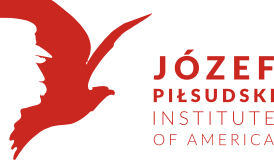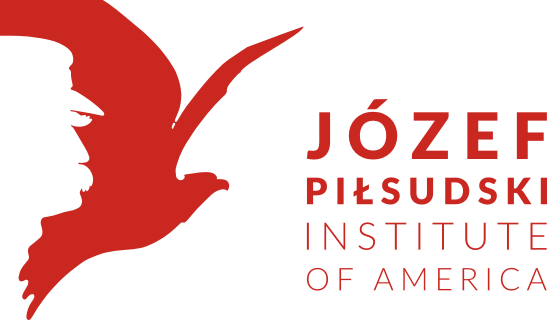 The Secret Operational Order No. 10000
The Secret Operational Order No. 10000
Piłsudski Institute of America has completed the digitization of the fonds “Chief of General Staff of Polish Army, General Tadeusz Rozwadowski Papers”. All documents in this archival collection are now available on the Internet. They constitute a very important material for historians and people interested in the course of fighting the Bolshevik invasion of Poland in 1920. Most of the documents speak about the happenings in July, August and September of 1920. Among them are reports on the dramatic situation of Polish troops retreating from the Red Army and the report retracing the course of the Battle of Warsaw on 15 and 16 August. There are also reports showing the successive phases of Polish counter-offensive and pursuit of the Bolsheviks. Among many invaluable documents is the Operational Order No. 8358 / III of the Chief of General Staff, showing the organization of the three anti-Bolshevik fronts and defining strategic goals for each army. There is also the famous Secret Operational Order No. 10000 of 10 August 1920 written personally by General Rozwadowski after discussion with Jozef Pilsudski, with situational sketches depicting two variants of encirclement of the Bolshevik forces advancing on Warsaw, signed by all the commanders of the individual sections of the anti-Bolshevik front. Of key importance it is also the Supreme Commander Operational Order released on August 15, in which he announces his acquisition of the army high command. The next day Marshal Pilsudski himself joined the battle, directing the Wieprz river thrust against the rear of the Bolshevik troops. Subsequent orders and handwritten correspondence between Pilsudski and Rozwadowski speak of an exemplary agreement and cooperation of both commanders. One can also notice great respect and loyalty of Rozwadowski to Commander-in-Chief Piłsudski. Pilsudski appreciated his contribution in the form of promotion to Lieutenant General and an official letter of commendation.
The development a winning strategy would not be possible without the capture and decoding of the Soviet cipher messages, which included plans aimed at defeating the Polish army and capture of Warsaw. Those have also been digitized and can be seen in the Files of the General Rozwadowski.
Among the digitized documents are also reports and operational information of generals Józef Haller - commanding the north-eastern front, Stanisław Haller in charge of the southern front, and Władysław Sikorski advancing from the north on the three Soviet armies far outnumbering his. A considerable amount of information about the fronts can also be found in dispatches of Commands of the Third, Fifth and Sixth Polish Army and in reports of general Kazimierz Sosnkowski and general Rozwadowski himself.
Digitization makes it possible to study the correspondence of Polish commanders with the French generals directing the French Military Mission in Poland, where they present their analysis of the situation on the Polish-Bolshevik front. Important notes can also be found in official statements, reports and letters of generals Paul Henrys, Maxime Weygand and Colonel Gaston Billotte. Reading these documents helps trace the course of the decisive phases of the fight against the Bolsheviks as seen through the eyes of the French members of the Military Mission cooperating with the Supreme Command of the Polish Army. Of particular importance are the conclusions and operational concepts of General Weygand.
A very important part of the General Rozwadowski Files is a collection of documents relating to Central Lithuania, talking about the Lithuanians supporting the Bolsheviks and their battles with the Poles in September of 1920. Another collection details the occupation of Vilnius by the troops of General Zeligowski. No less important are the documents recording the situation in Gdańsk and the relationship of the Free City of Gdańsk with Poland at the turn of 1920 and 1921.
The digitized documents will be invaluable to historians and others fascinated with the history of the formation of the Polish state after 123 years of partitions. They will help recreate the course of peace negotiations with the Soviet Union which ended with the Treaty of Riga and preparations for the demarcation of the Soviet-Polish border. General Rozwadowski took part in them as well, proposing demands of a military and economic nature. Researchers seeking the behind the scenes details and personal information have now an easier access to them through digitization of telegrams, letters, reports and complaints from 1920 and 1921.
Sharing the Files General Rozwadowski on the Internet should facilitate the work of his future biographers and historians, seeking to describe his contribution to Poland. Very eloquent are his handwritten annotations in the margins of documents and his arrangement of the files taking into account their chronology and weight. General Rozwadowski can be seen in them as connoisseur of the art of war and an excellent chief strategist devoted loyally to Marshal Pilsudski.
Rozwadowski’s early achievements and inventions, already before the First World War, were appreciated in the Austro-Hungarian Empire and in Romania. The defense of Lviv at the turn of 1918 and 1919 has made him not only a hero of the city, but also a national hero. He created the Military and Border Guard, which was a prototype of the Border Protection Corps. At his command was established a cavalry division, which became the nucleus of future cavalry units. It was he who first introduced the draft organization of Polish military authorities, later modified by Piłsudski. He was an excellent head of the Polish Military Mission in Paris, where he gained the side of Marshal Foch while Poland was at the risk of the Bolshevik onslaught. After the victory over the Bolsheviks he became an Inspector General of Cavalry. During the May coup he sided with the legitimate government, which brought upon him the wrath of Pilsudski. He was falsely accused of a crime and jailed at the Vilnius Antokol. He died in mysterious circumstances in 1928. He was buried with great honors Polish Cemetery of Eaglets in Lviv. In the 1970-ies, fearing the destruction of his remains by the then communist Ukrainian authorities, they were transferred to an unknown place, probably the Lychakiv Cemetery.
The digitized files do not have documents about Rozwadowski activities prior to 1920 and after 1921. However, documents that now provided online speak clearly about him as a great general and patriot.
Andrzej Józef Dąbrowski, September 27, 2017
----------
The digitization of fonds. 3: "Chief of General Staff of Polish Army, General Tadeusz Rozwadowski Papers" began in 2016. The fonds wa paginated Barbara Lach, scanned by Tomasz Draus, Aleksandra Korga, Nicole Kusztykiewicz and Caroline Niepokój and described Andrzej Józef Dąbrowski. We are grateful to Polish and Slavic Federal Credit Union, the Polish Consulate General in New York and many individual donors, especially Sophia J. Wierchun, Maciej Golubiewskiemu, Adam and Eve Bak, Peter and Eugene J.Trela Święcickiemu for the generous donations that enabled the digitization of our resources. Digitization Of fonds Nr. 3 was also sponsored by a grant of the Polish Senate in 1917.
Explore more blog items:









